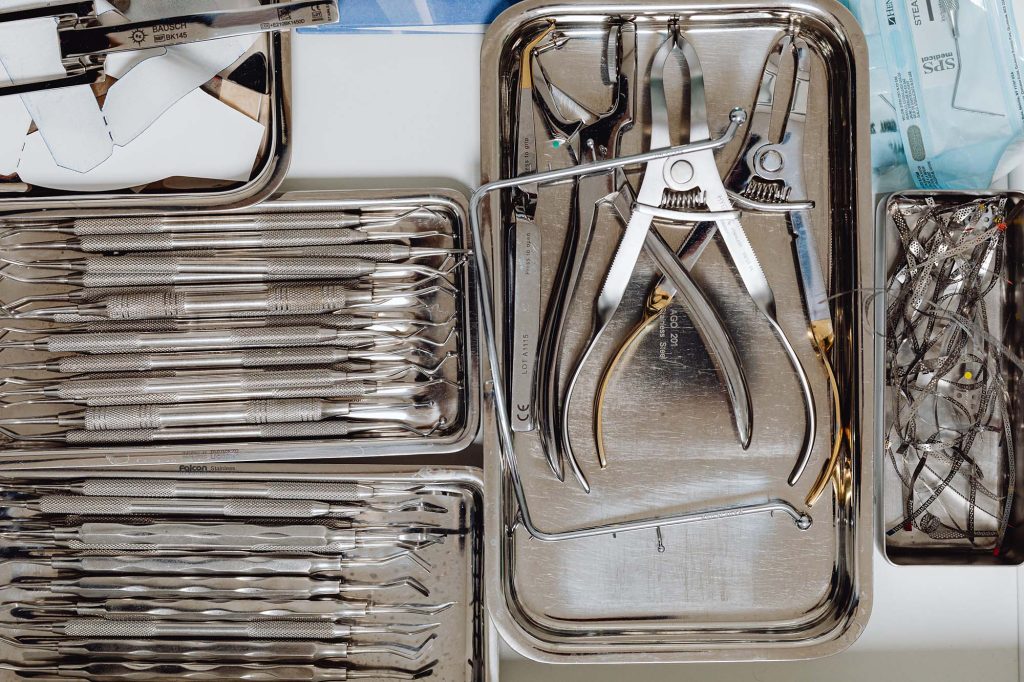
Dental Instruments for Braces: Tools That Keep Your Teeth Straight and Healthy
If you have braces, you know that the journey to a straighter smile can be a long one. It requires dedication, patience, and a few visits to the orthodontist. But did you know that the success of your treatment also depends on the dental instruments used by your orthodontist? In this article, we will explore the dental instruments for braces that are essential for the treatment, and how they work to keep your teeth straight and healthy.
The Importance of Dental Instruments for Braces
The dental instruments used by your orthodontist play a crucial role in your treatment. These tools are designed to help move your teeth into the desired position, adjust the braces, and ensure that your teeth and gums remain healthy throughout the treatment. Without these instruments, your orthodontist would not be able to achieve the results you want.
Types of Dental Instruments for Braces
There are several types of dental instruments for braces that your orthodontist may use during your treatment. Here are some of the most common ones:
1. Pliers
Pliers are one of the most versatile tools that your orthodontist will use during your treatment. There are several types of pliers, including wire-cutting pliers, bracket-placing pliers, and band-removing pliers. Each type of plier has a specific purpose and is used to adjust the braces in different ways.
2. Orthodontic Pliers
Orthodontic pliers are designed to help your orthodontist bend wires and make adjustments to the brackets. They come in various shapes and sizes, and each type of orthodontic plier is used for a specific task.
3. Band Seaters
Band seaters are used to place bands around your molars. They are designed to ensure that the bands fit properly and are seated snugly against your teeth.
4. Cheek Retractors
Cheek retractors are used to keep your cheeks out of the way during the procedure. They come in different shapes and sizes and are used depending on the size of your mouth.
5. Ligature Cutters
Ligature cutters are used to cut the small rubber bands that hold the wire to the brackets. They are specially designed to cut these bands without damaging the braces or the wire.
6. Archwire Cutters
Archwire cutters are used to cut the archwire to the appropriate length. They come in different shapes and sizes, and each type of archwire cutter is used for a specific task.
FAQs
Q1. Are dental instruments for braces painful?
A1. The dental instruments used during your treatment may cause some discomfort, but they should not be painful. Your orthodontist will do everything possible to make the procedure as comfortable as possible.
Q2. Are dental instruments for braces safe?
A2. Yes, dental instruments for braces are safe when used by a trained professional. Your orthodontist is trained to use these instruments safely and effectively to achieve the best possible results.
Q3. How often will my orthodontist use dental instruments for braces?
A3. Your orthodontist will use dental instruments for braces at every appointment. The frequency of your appointments will depend on the complexity of your treatment and how quickly your teeth are moving.
Q4. Can I use dental instruments for braces at home?
A4. No, you should not attempt to use dental instruments for braces at home. These instruments are designed to be used by a trained professional, and attempting to use them at home can cause serious damage to your teeth and gums.
Q5. How do dental instruments for braces work?
A5. Dental instruments for braces work by applying pressure to your teeth to move them into the desired position. Your orthodontist will use different instruments to adjust the braces and wires, ensuring that your teeth move gradually and safely.
Q6. How can I ensure that the dental instruments used by my orthodontist are safe and effective?
A6. To ensure that the dental instruments used by your orthodontist are safe and effective, make sure that you choose a reputable orthodontist who is licensed and experienced. You can also ask your orthodontist about the instruments they use and how they work to ensure that you are comfortable with the treatment.
Conclusion
Dental instruments for braces are essential tools that help your orthodontist move your teeth into the desired position, adjust the braces and wires, and ensure that your teeth and gums remain healthy throughout the treatment. By understanding the different types of instruments used during your treatment, you can have a better understanding of how your braces work and what to expect during your appointments.
Remember, choosing the right orthodontist is crucial to the success of your treatment. Always choose a licensed and experienced orthodontist who uses safe and effective dental instruments for braces.

